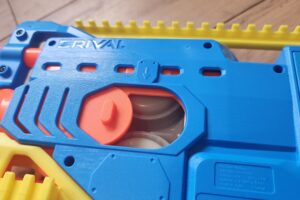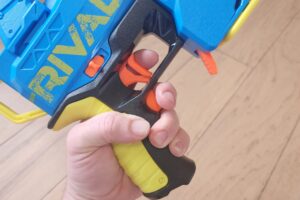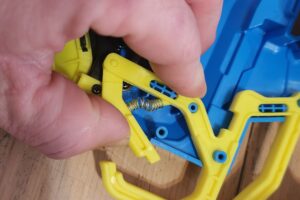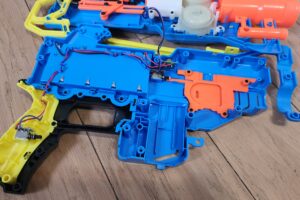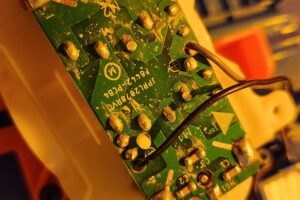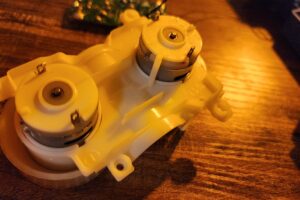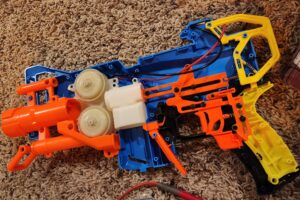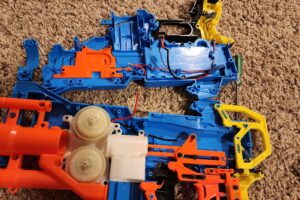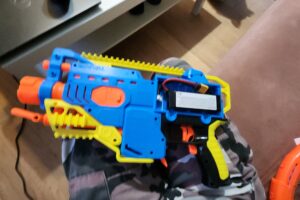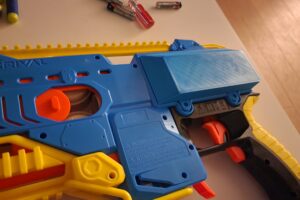
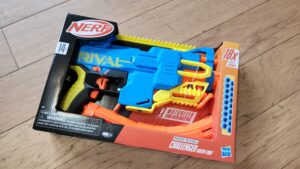
Nerf Rival Challenger
Hasbro
$35
95fps average
Three balls per second
A great blaster worthy enough to continue the Rival line!
Nerf Rival Challenger Review
February 18, 2024Here’s a fun fact: we haven’t had a new Nerf Rival flywheel blaster in over four years, since BEFORE the Covid pandemic. The last one was the Charger, which came in at $35, featured an internal magazine, and focused on being a compact primary blaster. This year, with the continued Accustrike refresh of the product line, we have the Charger – a blaster for the same price, but with much more capability. It’s essentially a Rival Stryfe, and that’s a great thing.
New Year, New Style
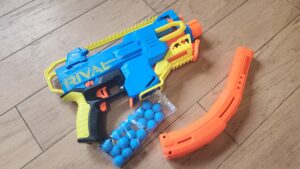 The Nerf Rival Challenger comes in the updated, minimalist design packaging that saves on plastic and is easy to recycle. Coincidentally, after snipping the few plastic ties that are used, you can also easily remove the box contents – or put them back inside, if you want to keep the box for display purposes. This blaster, though, will probably spend more time out of the box than in it.
The Nerf Rival Challenger comes in the updated, minimalist design packaging that saves on plastic and is easy to recycle. Coincidentally, after snipping the few plastic ties that are used, you can also easily remove the box contents – or put them back inside, if you want to keep the box for display purposes. This blaster, though, will probably spend more time out of the box than in it.
The Challenger comes with a curved 12-round magazine and 18 Rival Accustrike rounds. Unlike past Rival blasters (using six larger cells or a rechargeable pack), this blaster requires 8 AA batteries (12V). It’s an interesting choice, and it does make the blaster lighter (AAs are 1/3 the weight of Cs). However, I assume that also necessitates a differently wound motor than a blaster running at 9v.
The Challenger has lots going on on the outside. The front features three Rival rails on the bottom, plus a swiveling strap point. There’s also a Nerf barrel attachment-style front end, though there is currently no use for it (it’s much larger than the standard). The jam door sits on the left side of the blaster, with the large flywheels you’d expect to see hiding underneath. A large portion of the rear end of the blaster is dedicated to the batteries.
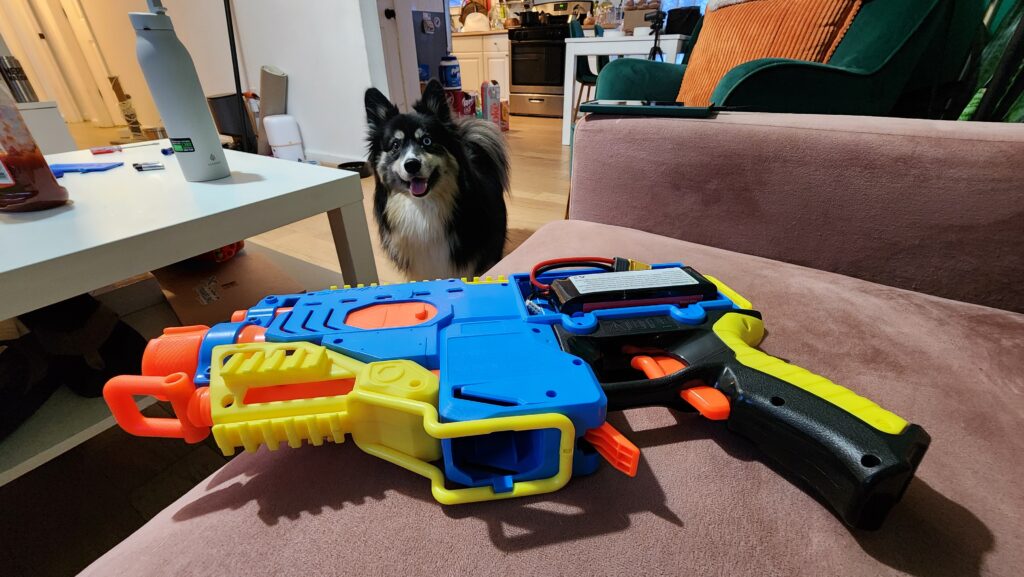 The main grip is large and comfortable to use, with a smooth main trigger and a rev trigger large enough for adult middle fingers.
The main grip is large and comfortable to use, with a smooth main trigger and a rev trigger large enough for adult middle fingers.
Of course, the big draw of this blaster is the use of Rival magazines. Unlike the Pathfinder’s initial issues, the Challenger accepts all Rival magazines, new and old. They’re easily inserted, easy to pull out while pressing the release lever with your thumb, and operate flawlessly. The only jam I’ve had so far was due to user error, pulling the mag a little bit out of place absentmindedly in battle.
Also, I didn’t realize until I took the blaster apart that the rear yellow section is a sling point as well, with a spring-loaded gate!
Performance
Eight fresh AA batteries got me an average of 95fps with my Challenger – in line with what I expected from past Rival blasters. However, AAs lack in current compared to larger sizes. As such, you need a few seconds for the motors to spin back up if you want the next shot to go just as fast. Rate of fire is as fast as you can pull the trigger (about three per second). Again, though, you’ll see successive shots go slower.
Modding and Testing in Combat
After my initial testing, I rewired the blaster to use a Lipo battery, and also designed an expanded battery cover. The next day, I used the Challenger extensively in a Nerf war with CANE, down in Cincinnati. On a fresh 3S Lipo battery, I was hitting 110-115fps. Another player who’d found a Challenger early was seeing 115-120fps. In any case, the blaster was tons of fun to use, and more accurate than I expected. There were plenty of shots made between pieces of cover that I know couldn’t have happened with other Rival blasters. So, at least for the blaster I bought, it seems tuned perfectly and just depends on the ammo not being too damaged from use.
Keep in mind, a 3S Lipo isn’t making the flywheels spin at a much higher RPM. They’re mainly giving the motors the current they want. Which reduces spinup times to near zero, and keeps the wheels turning.
As for the internals? Feast your eyes.
The internals are definitely Stryfe-like in their construction. The battery tray, jam door switch, and rev trigger switch are on one half of the shell. The motors sit in the other. It’s a slight annoyance, if only for the fact that you leave enough slack in the new wiring to “butterfly” the shell apart. The expanded battery tray can comfortably hold a 2200mAh 3S Lipo, if not slightly larger. It also doesn’t disrupt the profile too much.
The two things this blaster now need are a stock attachment point to replace the rear sling point, and a proper front grip. The blaster works as is, but being more comfortable can never hurt!
Final Thoughts
The Nerf Rival Challenger is a clear winner in my book. It performs well, does exactly what it needs to, and provides opportunity for hobbyists like me. The new Rival aesthetic that started last year really works for me, and this looks far better in person than in the initial pictures I saw. All this for $35? That’s worth a purchase!

